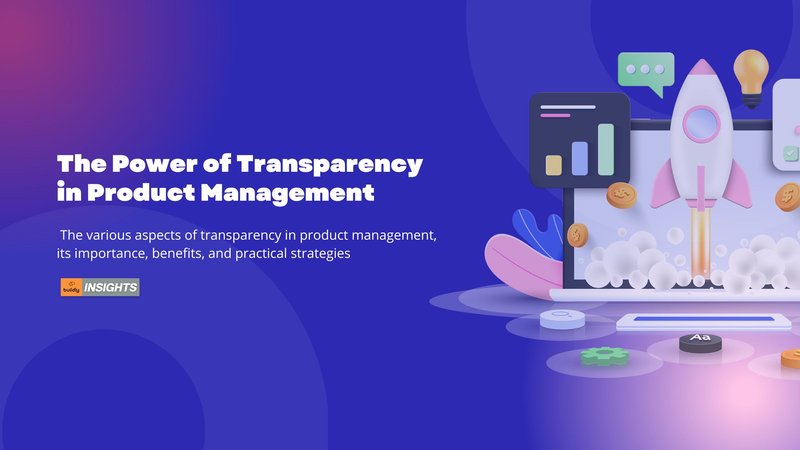The Power of Transparency in Product Management

- admin
- Nov. 3, 2023
The Power of Transparency in Product Management
Transparency is more than an advertising slogan in the quick-paced area of product management; it's an effective tool that may significantly impact the success of your product. It is possible for product managers to increase trust, involve stakeholders, and make better decisions by cultivating an environment of transparency and honesty. We'll discuss the value of transparency in product management and how it may accelerate the expansion of the product you are selling in this article.
The Foundation of Trust
The foundation for confidence in product management is transparency. Building trust with your team, consumers, and stakeholders requires being upfront and honest about the aims, difficulties, and development process of your product. Because it affects how people understand and use your product, trust is crucial.
Benefits of Being Transparent
Stakeholder Engagement: Stakeholders feel more involved and committed to the success of the product when they can see the roadmap and progress in straightforward terms. This may result in insightful comments, encouragement, and feedback.
User Trust: Openness in the collection, use, and security of data promotes user trust. A product that respects users' privacy and is transparent about how their data is handled is more likely to be used by them.
Effective Problem-Solving: Teams that communicate openly about obstacles and failures are better able to work together to develop solutions. It shields against shocks and promotes proactive problem-solving.
Superior Decision-Making: Well-informed choices produce better results. Transparency guarantees that all stakeholders and team members have access to the data they need to make decisions that support the objectives of the product.
Techniques for Putting Transparency Into Practice
- Regular Updates: Give regular updates on the state of the product, its difficulties, and its successes. This can be done using project management software, email newsletters, or team meetings.
- Loops for Feedback: Continually ask for input from coworkers, clients, and other stakeholders. Pay attention to their queries, recommendations, and worries, then address them.
- Clear Roadmaps: Provide stakeholders with a clear understanding of what to anticipate, both short- and long-term, by sharing product roadmaps with them. Describe the logic behind the feature prioritizing system.
- Data Privacy: Clearly state how user information is gathered, handled, and safeguarded. Keep your privacy policies accessible and unambiguous.
- Incident Response: In the event of a security incident or data breach, notify the authorities and impacted parties as soon as possible, in a transparent and timely manner, as required by applicable regulations.
Real-Life Example
Transparency has been used by numerous successful companies to obtain a competitive advantage. Buffer is a popular example of a social media management platform. By being transparent about their revenue, user base, and even employee wages, they adopted the transparency concept. In addition to fostering user trust, this openness attracted a devoted consumer base that valued their honesty.
Transparency is a useful strategy that can improve your product management process, not just an abstract idea. It promotes involvement, builds trust, and results in more informed decision-making. By putting open processes into place, you may strengthen bonds with stakeholders, consumers, and members of your team, which will ultimately accelerate the success of your product.

